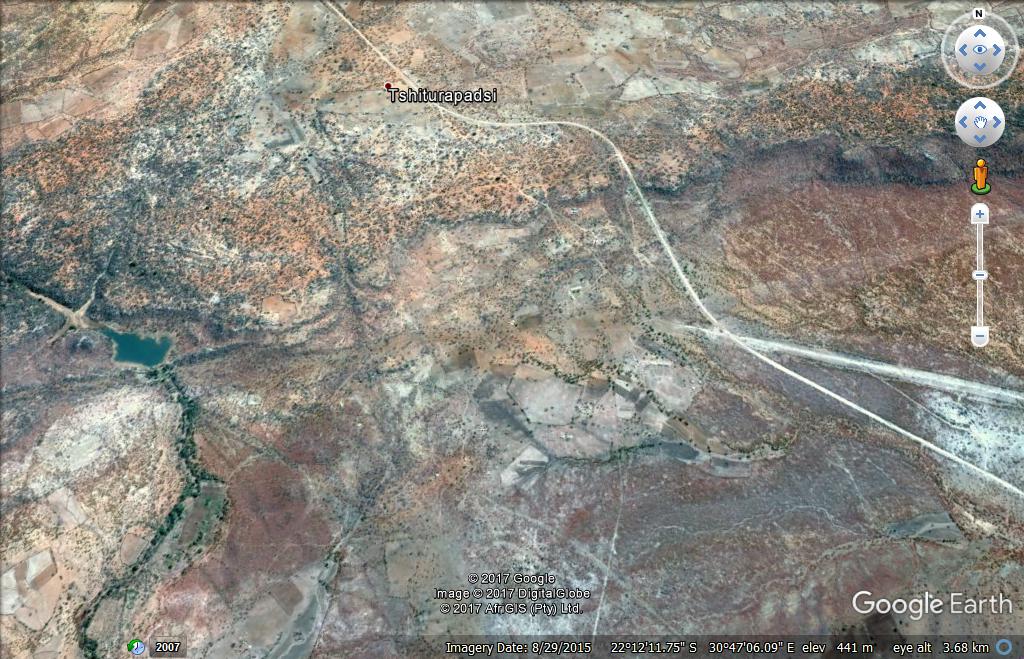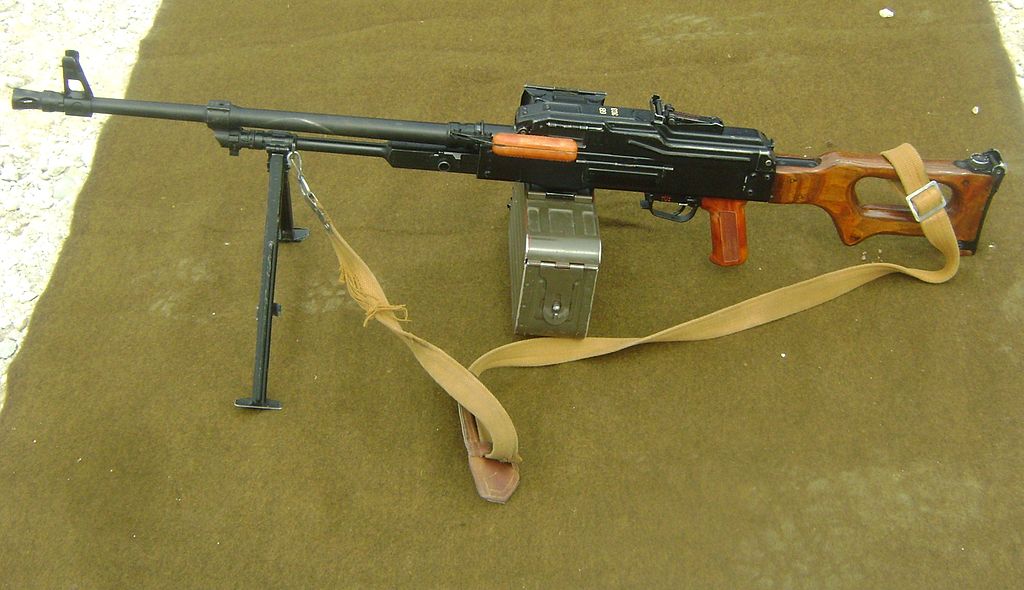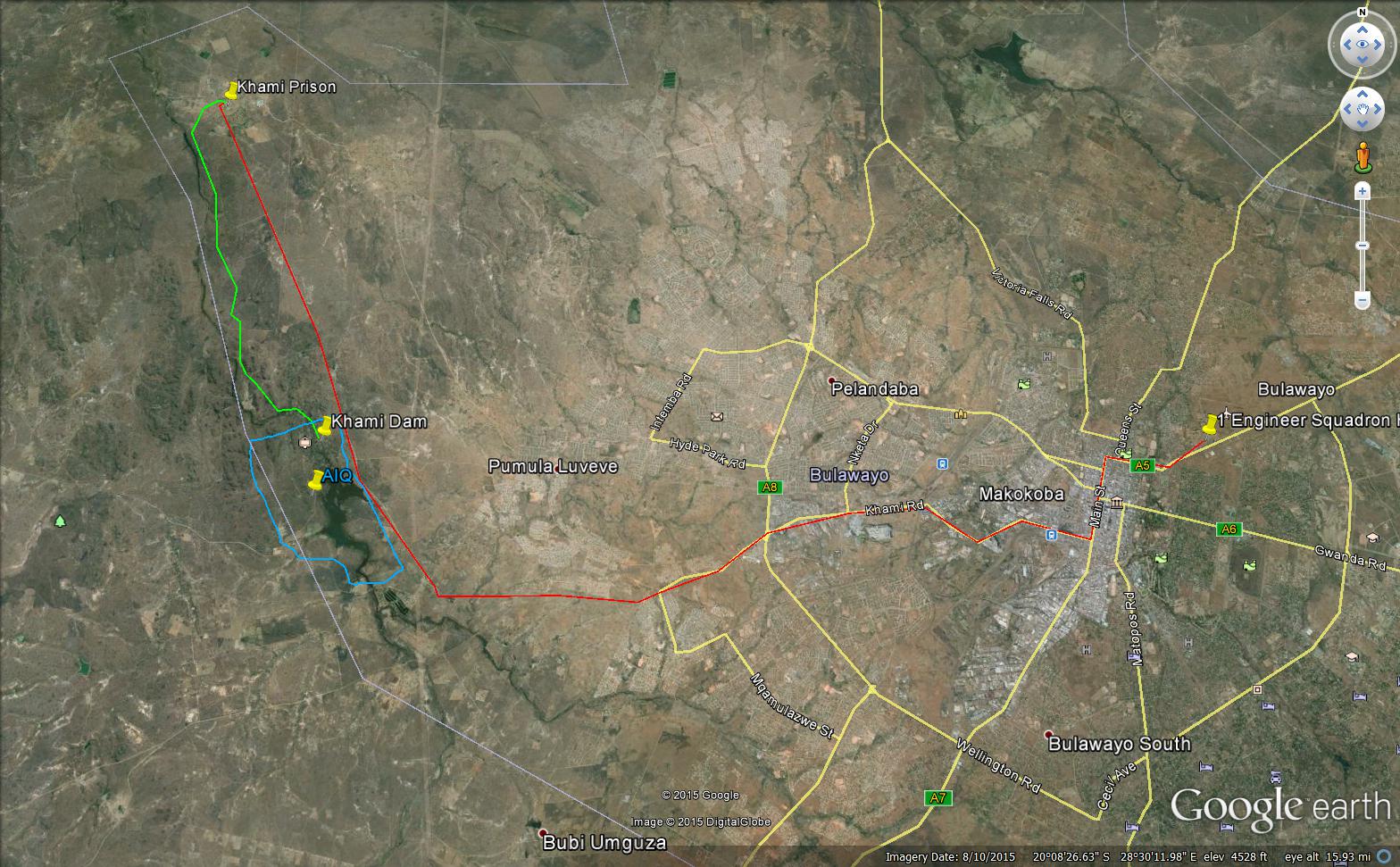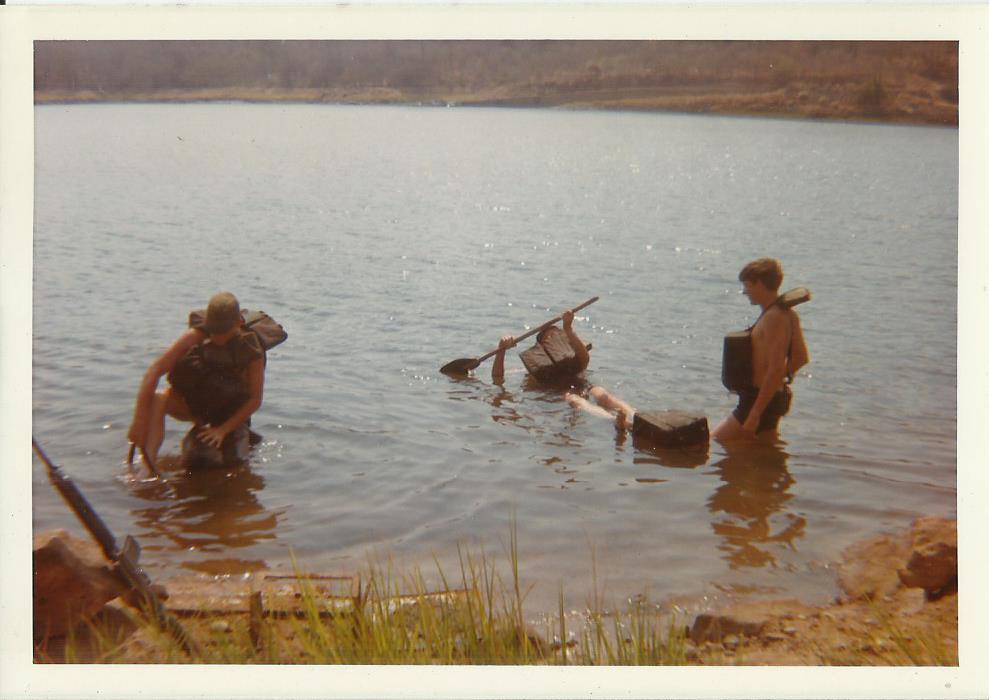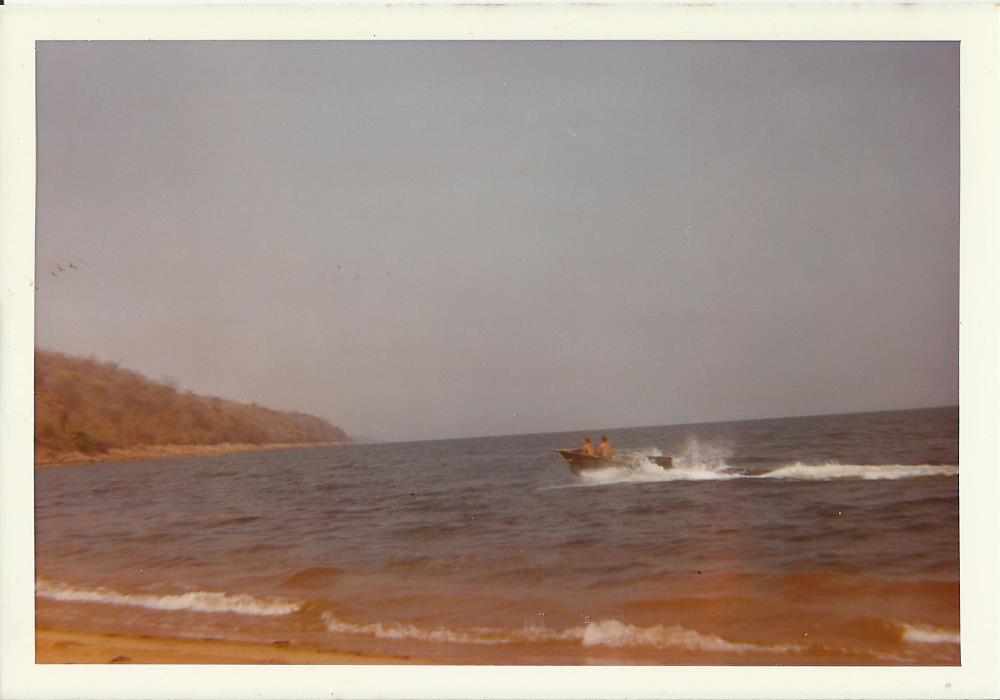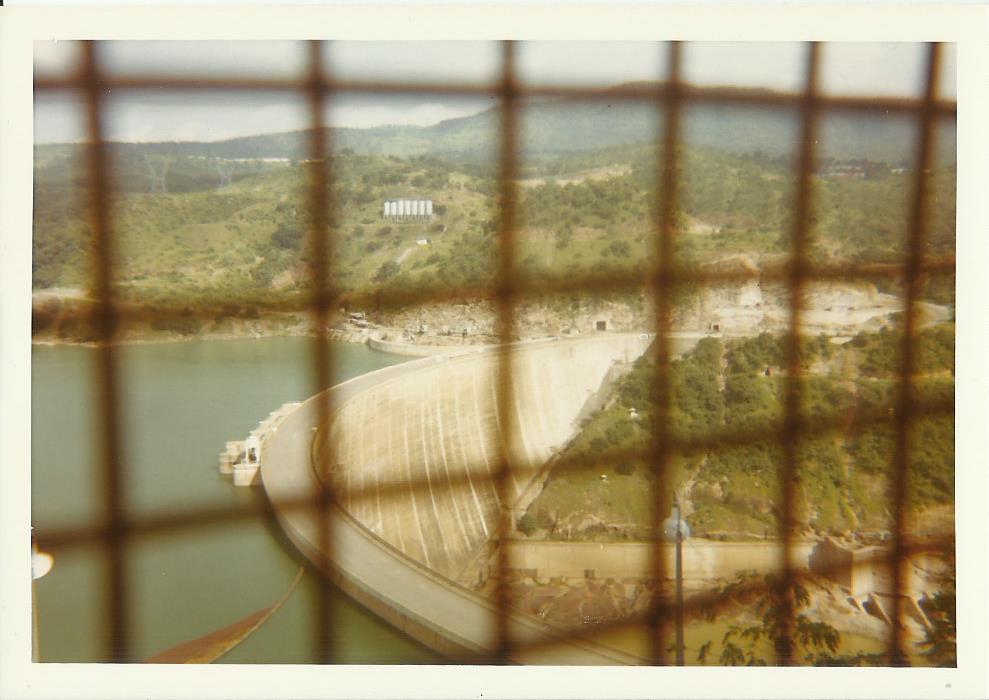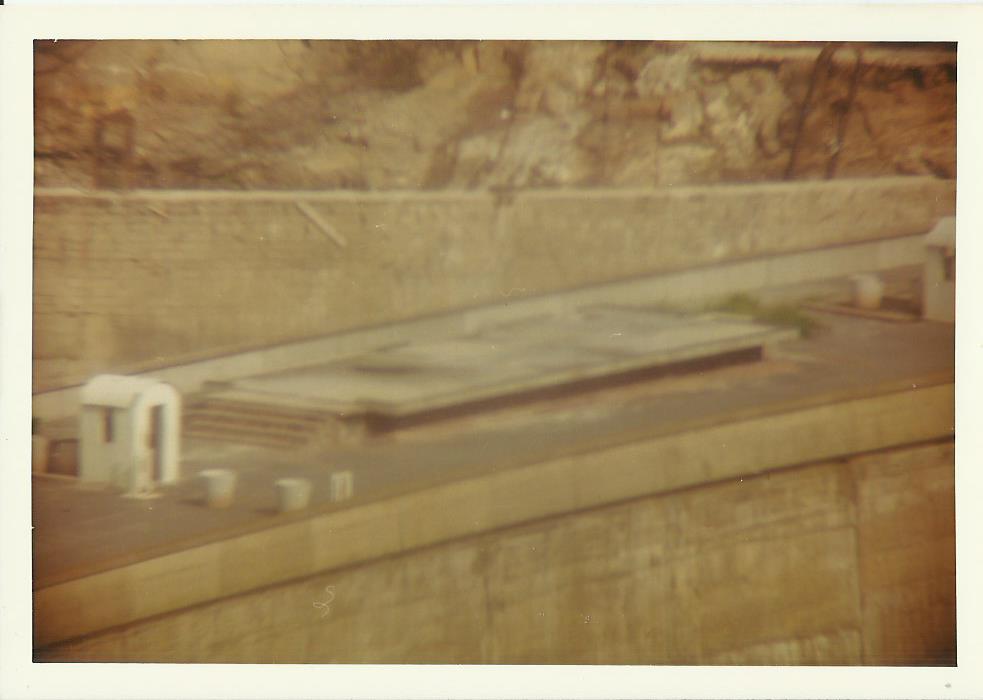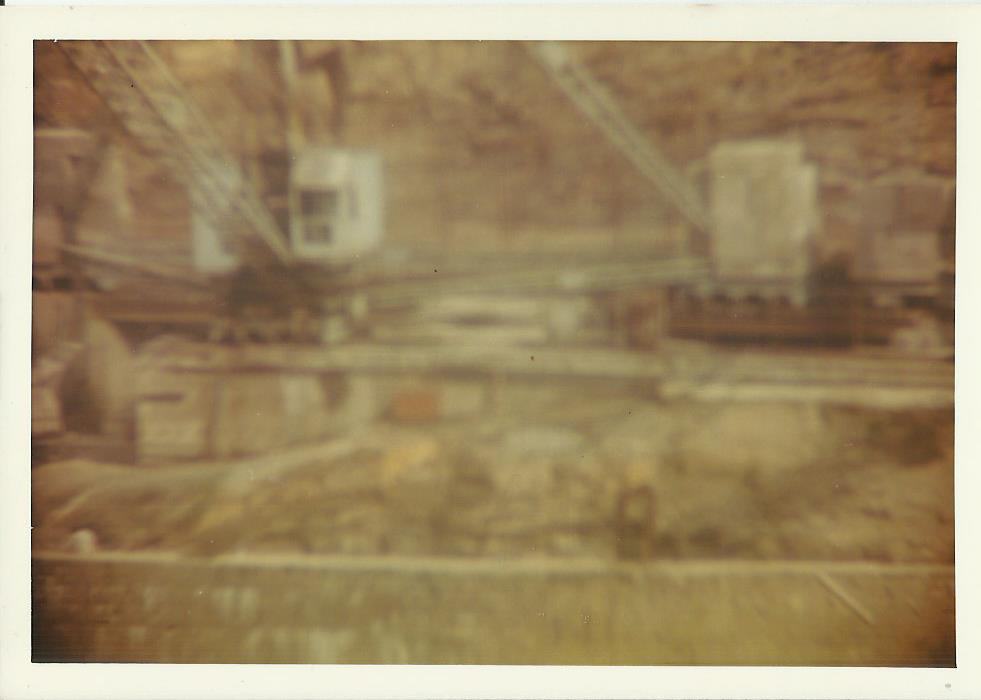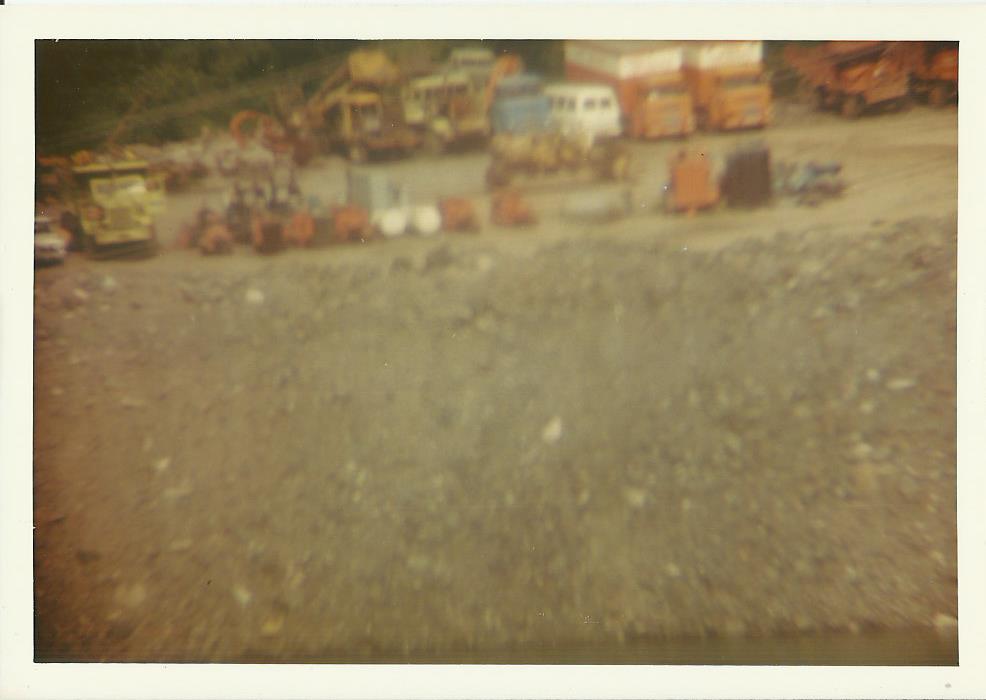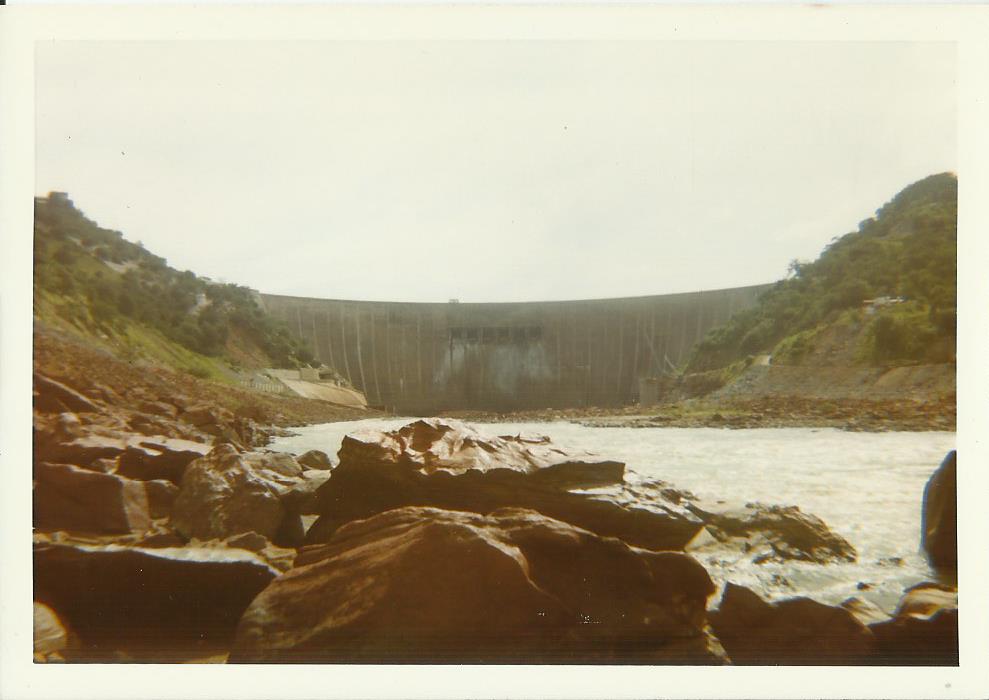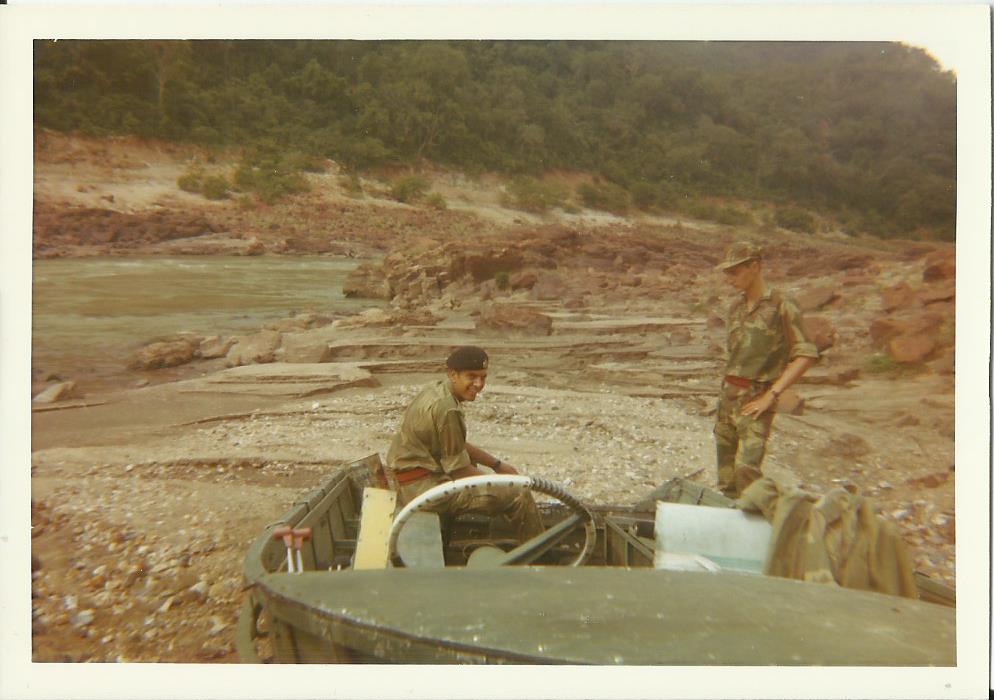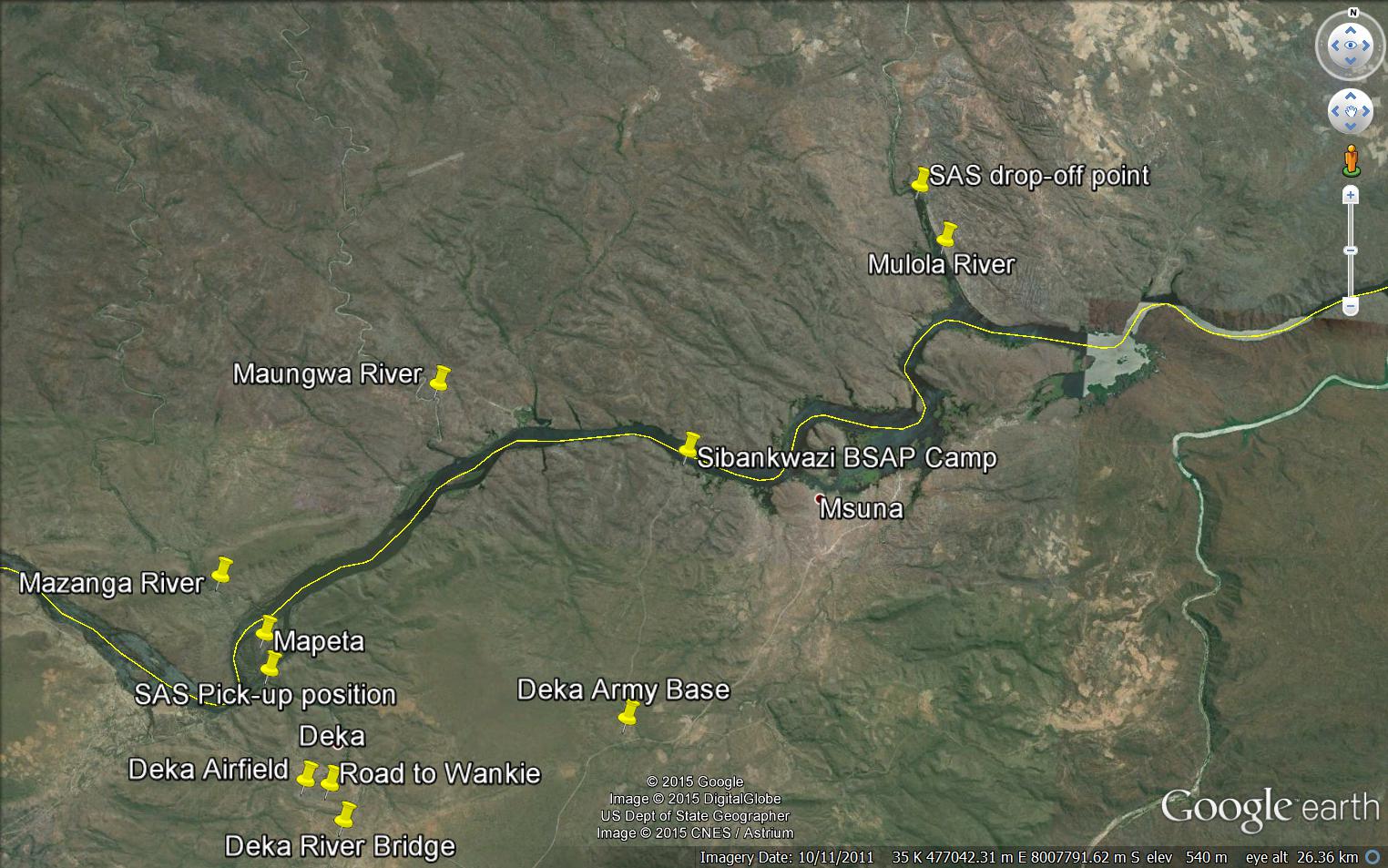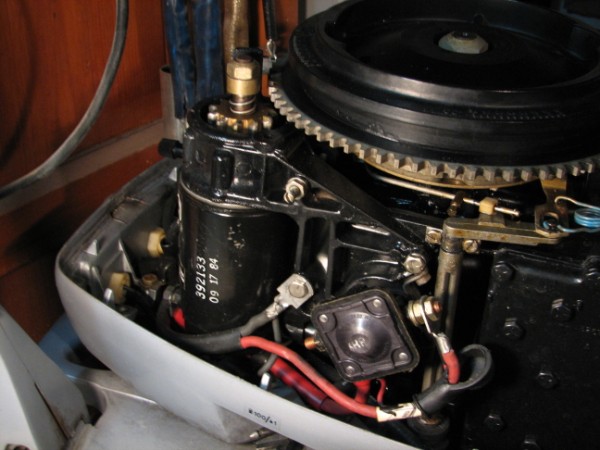Twin Browning’s On The Bridge (Part 1)
August 12, 2023
Some time back I had a rather spirited conversation with an individual over the idea of mounting twin 7,62 mm x 51 mm Browning machine guns atop the cab of a Hippo (converted Bedford RL), with the trigger mechanisms activated by push-bike (bicycle) handle-bar brake levers. The handle-bars were located in a convenient position for the co-driver of the Hippo to be able to fire the guns without sticking his head outside of the vehicle – thus avoiding a third-eye. All he had to do was pull the brake levers from inside the cab and the cables that led to the gun triggers, fired the weapons.
The Rhodesians thought that this was a brilliant idea, and in theory it probably was considering we were forced into using all kinds of solutions to problems that we had to overcome due to international sanctions and the arms embargo. Rhodesia used South African (Armscor) built Hippos. To the best of my knowledge Rhodesia never produced any of their own. Those that we used were former South African Police vehicles, donated to Rhodesia after their withdrawal.
In this episode I am going to relate my own personal experience firing these guns from a Hippo in a live contact with the enemy.
Firstly it would be remiss of me not to first give a bit of background to the two main actors of this episode – the Browning Machine Gun, or to use its correct nomenclature, the M1919A4 Browning Medium Machine Gun, and the Hippo personnel carrier (Bedford RL variant designed to protect against landmines and small arms fire).
M1919 Browning Medium Machine Gun
Lets start with a quick look at the weapon specifications:
- Weight: 14 kg
- Caliber: 7,62 mm x 51 mm (Springfield .30-06)
- Length: 964 mm (includes barrel of 610 mm)
- Action: Recoil operated
- Rate of fire: 400-600 rounds per minute
- Muzzle velocity: 853 meters/second
- Maximum firing range: 1,500 meters
- Ammunition feed: Belt-fed
The M1919 Browning is a .30 caliber medium machine gun which saw widespread service during WW2, The Korean war, and The Vietnam war. It was used by most NATO countries until the 1990s and is still in use today in some theatres.
Similar in design to the larger Browning .50 caliber M2, it is a recoil operated machine gun, highly versatile and was used widely as a light infantry weapon or mounted in some way on armoured vehicles. It was fitted to aircraft and also used in an anti-aircraft role, making it truly a weapon for all theatres of war.
Above – The air-cooled, belt-fed M1919A4 machine gun with its M2 tripod weighed only about 48 lbs., compared to more than 100 lbs. for the water-cooled M1917A1 machine gun. (National Rifle Association of America).
Above – In this original color photo from 1944, U.S. Army paratroopers train with the M1919A4 machine gun. (National Rifle Association of America).
Above – The Browning .30-cal. M1919A4 light machine gun was used to great effect in all theaters during World War II. A U.S. Army soldier (above) crews an M1919A4 during operations on Jan. 16, 1945, in northwest Europe. (National Rifle Association of America).
When used in the Infantry role the gun required at least a two man team but more usually four men were used; the gunner, the assistant gunner and two ammunition carriers. We never used them like this in the Rhodesian Corps of Engineers – and I definitely never saw them being lugged about by Infantry patrols.
Originally introduced as the M1919A1 the concept was of a light and easy to transport weapon featuring a bipod and light barrel. However, it soon became apparent that it was too heavy to be carried and also too light to withstand sustained rates of fire (the barrel would overheat causing a runaway gun), and so with the addition of a tripod and a heavier barrel, the M1919A4 had, at least addressed the sustained fire problem. It just needed more men to get it to where it was needed.
Usually mounted on a lightweight, low-slung tripod for use by the infantry the M1919A4 weighed in at 14 kg’s. Using fixed vehicle mounts it could be mounted on a variety of vehicles including Jeeps, tanks, Armoured Personnel Carriers, and of course – our Hippo’s.
The Hippo Armoured Personnel Carrier
Again, lets first have a look at the specifications of this beast:
- Weight: 8.8 tonnes
- Length: 6.53 meters
- Width: 2.46 meters
- Height: 3.3 meters
- Crew: 2
- Passengers: 10
- Main Armament: 2 x 7,62 mm Browning manchine guns, front mounted
- Chassis: Bedford RL
- Engine: 2.5 liter in-line 6 cylinder water-cooled, petrol
- Transmission: 4-speed manual synchromesh
- Ground clearance: 32 cm
- Fuel capacity: 240 liters
- Maximum operational range: 640 kilometers
- Maximum speed: 73 km/h
The Hippo is a South African designed Armoured Personnel Carrier (APC). Specially designed to be mine-resistant, it can carry ten infantrymen and a crew of two. The vehicle’s remote-operated turret mounts dual 7.62mm Browning machine guns, but like other improvised fighting vehicles, it is only lightly protected. An interim solution adopted to deal with the threat of landmines deployed by the South West African People’s Organization (SWAPO) in northern Ovamboland, the Hippo was simply a blast-proof hull fitted to a Bedford RL chassis. Similar to the BTR-152, it offered a staggered troop compartment with seating facing inwards. Vision was restricted to narrow plate glass windows. This layout was universally unpopular and later corrected with subsequent vehicle development. There were firing ports for the occupants and a powered machine gun turret could be braced on the open top, though these were seldom fitted. Passengers and crew debussed from the rear. The Hippo Mk1R was based on a M1961 Bedford truck chassis, which was being phased from South African service in 1974. Some 150 were shipped to the South African Police that year, another 5 being donated to the South-West African authorities. South African Police units left several behind when they withdrew from Rhodesia in 1976, and these were retained by Rhodesian Security Forces.
Sadly most, if not all of these grand old ladies of the bush, that probably saved countless lives, have now ended up as rusted hulks, waiting to be cut up and sold for scrap. The photographs above, whilst giving the reader excellent examples of what the Hippo was, are at the same time bringing me a personal sense of nostalgia and sadness – I have travelled in them, driven them and fought the enemy with them- they are therefore part of me, and I a part of them. We are inseparable in this sense.
In Part 2 of Browning’s on the Bridge, I will describe how one of these beautiful (to me at least) vehicles and my crew done what we were paid to do – make contact with the enemy.
And it was in such an unusual way – sort of a meant-to-be-moment.
On The Boats……Up The Creek With The SAS (Part 4: Also known as Eight Men In A Leaky Boat)
March 28, 2015
ZAMBEZI RIVER DOWNRIVER FROM MAPETA ISLAND: EN-ROUTE TO THE SAS DROP-OFF POINT
The boat was heavy and she laboured through the water and it felt as if invisible claws were trying to hold her back…..not wanting to let us go. An omen perhaps?
Tony was doing the best he could but try as he might he could not get us up on the plane even though we had moved as much kit to the back of the boat as possible to lift the bows. This in turn caused the stern to dip dangerously low towards the waterline and it was a little unsettling to say the least. Port and starboard trim was good though and we remained straight and level, not tilted to one side. We settled on a half-throttle pace, and taking our direction from the SAS Operator on the front bench the twin Evinrudes burbled us slowly back down the river.
We travelled within Rhodesian territory for quite some time, and for youngsters that had no previous experience of this type of operation this took away some of the tension of what may be ahead of us. It was somehow reassuring to know Rhodesia, our safe haven, was not too far away if the shit hit the fan. The SAS Operators were as always the ultimate professionals and I was proud to be working with them. They instilled a sense of security. You knew instinctively that if things turned nasty they would know exactly what to do. They were good men.
We had passed the Maungwa River mouth to the north, and then our second home the British South Africa Police (BSAP) camp at Sibankwazi. Msuna Mouth glided by in the darkness to our right and I craved for the ice-cold beers and battered barbel snacks I had consumed there on many a visit to the friendly owners of the fishing resort. It was easy to let ones mind roam and that was dangerous. We meandered on down the river, passing two large islands……both pitch-black and foreboding.
I was jerked back to the present, my mind having begun to wander off. Tony had swung us hard a-port and I lost my balance slightly while at the same time keeping a beady eye on the bow wave. The SAS man at the front had given a silent direction change to Tony. In a few minutes we would be crossing the invisible line that marked the international border between Rhodesia and Zambia. It was an eerie feeling, crossing into another country without permission, no passports, no questions. I began to warm to the idea of doing something I had never done before, and indeed I had crossed that point where fear no longer exists. You were committed to the mission, personal weakness or doubts could no longer be a consideration and there was no turning back. On every high-risk mission I have taken part in there was always a short period when I was afraid, sometimes very afraid. With me this is usually at the start and moving into the advance-to contact-phase, but once time crosses that indefinable moment that I cannot explain, a wonderful warm feeling washes over me….a feeling of being in control of my own emotions and destiny. The dye had been cast and there was no return.
It was that time for me now……approaching enemy shores on a dark and lonely river.
(Reservoir by StrongSteve)
The atmosphere on the boat had changed in a very subtle way. No one said anything but you could feel it. The SAS men began to check small details on their kit. Weapons were moved into more convenient positions, the smell of gun-oil permeating the air, masculine and comforting. Webbing was tightened over shoulders, shifting the weight of equipment onto the hips. Legs were stretched in the cramped confines of the boat.
A small red light came on as one of the Operators checked a plastic covered map with a small torch…….looking up at me he nodded his head, managing a white-toothed smile that shone through the darkness of the night and his camouflage cream. We were now well into Zambian waters and heading towards the Mulola River, one of the biggest rivers that emptied from that country into the Zambezi. We could see its gaping mouth ahead of us……a huge dark maw of emptiness seemingly waiting to swallow its victim. As we exited the Zambezi and entered the Mulola it became claustrophobic…….or so it seemed to me. After having vast expanses of water between the boat and land previously, we were now being enclosed by the high, almost invisible banks of the Mulola. The feeling of vulnerability returned to me, this would be the perfect place for an ambush and a mans imagination can run amok. This is good in some ways as it keeps you switched on. We were trained to always look for cover to move to if attacked. On land this is great idea but in the middle of a river it means absolutely bugger all. if the gooks were waiting for us we were well and truly fucked. Even if we made it to one of the banks, climbing to safe ground would be a challenge in the thick, rich vegetation. I unconsciously thought of gunfire and green tracers arching through the night sky……..willing them to stay away.
I cannot be sure how far we went up the river but probably about 2 kilometers as far as I can remember. Tony had the engines throttled right back now and we were just making enough way for the con to respond. At this speed the engines were almost silent but in the still dark night sounded to me like a pair of screaming banshees. it seemed to me that any gook within 100 clicks would hear us.
The map above shows our general route from the pick-up point to the drop-off point. Places of note along the way are also shown. The Mulola was, to the best of my recollection dry in some areas at that time and we navigated up river via quite narrow channels.
The boat rocked as the SAS Operator at the front stood up. He was studying the bank on the western side of the river. Understandably there had been no pre-recce of a drop-off point for security reasons and getting these lads off safely was now our top priority. It was past midnight and we also needed to get back before first light. We kept moving further into Zambia. The SAS navigator indicated to Tony that we should get closer to the bank and stop. He took out his map, again a little red torch was used, the only sound the two idling engines. The navigator moved us forward again…….one, two, three minutes passed and then just before the river took a sharp turn to the left he had Tony pull us into a wide hippo-track that led up the river bank. We had arrived at the drop-off point.
These men were well-trained. There was no need for chatter or briefings. That was all done before we left Rhodesia. And they were so silent….no clanking or scraping of metal. Preparation was perfect in all respects. Everyone knew what he had to do and what kit he needed to carry. They disembarked fast and before we knew it all except one had disappeared up the hippo-track to the top of the river bank. The boat seemed to breathe a huge sigh as the weight was lifted from her trusty old frame and she rose proudly up and out of the water, rocking gently to and fro. The Operator that remained with us spoke in low tones. He thanked us on behalf of the others and added that the plan had changed. We no longer needed to go back to the old farm at Mapeta, nor would we need to pick them up. We were to go straight back to Sibankwazi.
And then he was gone…….a grey ghost vanishing into the night. I was a little sad really and I would miss those guys.
There was a lot of water in the boat, all pooled at the stern under my booted feet. This was not as bad as it seemed and it would drain through a manually operated ball-cock on the way back when we got up on the plane. It was time for Tony and I to change over. The first thing to be done was to connect the reserve fuel tanks without killing the motors. We wanted to keep them running to avoid any type of technical failure on a restart. This was not too much of a challenge and we managed to bring the new fuel on-line without incident.
Tony took his place at the stern and I got behind the wheel…………it was time for the lonely journey back. Thats when my imagination started working overtime again. What if the evil gooks had planned it this way? Let us in and then shoot the shit out of us on the way out? it seemed plausible to me and something I might try if I were in their position. Just one of those things though and we needed to get moving.
Both engines were gurgling sweetly on idle and Tony gave me a thumbs-up to start moving astern. I took a sip of Coke from a can I had opened and shifted both engines into reverse……..and heard the sickening crack of a propeller shear-pin snapping. I had somehow manged to break the golden rule…….too many revs when changing gear normally equals shear-pin failure. I had just screwed-up fifty percent of our motive power and possibly placed us in harm’s way.
We were now two clicks up a Zambian Creek in a leaky boat with a dead engine………and the possibility we were being watched by bad guys was very real.
This mission was far from over………….
Please also have a look at my website dedicated to Rhodesian and South African Military Engineers. Please join us on the forums by using the following link:
http://www.sasappers.net/forum/index.php
Copyright
© Mark Richard Craig and Fatfox9’s Blog, 2009-2015. Unauthorised use and/or duplication of this material without express and written permission from this blog’s author and/or owner is strictly prohibited.
On The Boats……Up The Creek With The SAS (Part 3: Also known as Eight Men In A Leaky Boat)
February 19, 2015
PICK-UP POINT: WEST OF MAPETA ISLAND
Tony and I had disembarked after deciding sitting on the boat was a bad idea and made us look like two shit-scared school boys.
We had found a position from where we could observe the boat and anyone approaching it. We needed to be careful here as in the poor light, we, or someone else approaching could be mistaken for the enemy with catastrophic consequences. We waited, and then waited some more. I juggled with the idea of letting the BSAP know we were in position but decided against it. We had agreed we would only make comms if we were in trouble.
Somewhere close by a tiger fish broke the surface, crashing back down into the water………a baboon barked in the early darkness, signalling danger. That was all…….nothing else stirred except the mosquitos that had found a new source of fresh blood. I began to think we were in the wrong position and had indeed fucked-up.
The man appeared silently from our right and immediately reassured us that he was one of us and showed no aggression. Without introductions he instructed us to follow him further inland until we arrived at what looked like a typical Rhodesian farm-house with a huge verandah facing the river. We had climbed a bit while following our mysterious stranger and the view from our present position would have been stunning in the daylight………at night all one could see was a black blob of nothingness.
There were about ten of them on the verandah. These were serious looking men. Clean shaven, neat military style hair and in full camouflage uniform. No beards so they were probably not Selous Scouts. I figured they were Rhodesian SAS. AK 47’s leant against the low verandah wall, an RPD and PKM rested lopsided on their bipods on the once highly polished floor.
There were still no introductions and that is the way it stayed. No names and in any case if there were they would have been pseudo. Thats how these men worked. We knew who they were and they knew who we were. That was good enough for me and Tony. There was quite a bit of banter going back and forth and we were drawn into it. I savoured the moment of working with a Unit that I considered probably the best in the world. I was more than a little in awe of these men. And so I should have been.
One of them called us aside and for the first time we were told what our mission was. We were to take the SAS into Zambia by inserting them up the Mulola River by boat. Our old Hercules was about to get her moment of glory…….and perhaps we were too. I was about to take part in my first external operation and who better to do this with than the men who wore the Winged Dagger and Wings On Chest? The job was straightforward enough…….take an SAS callsign up a Zambian creek and drop them off…….then pick them up at the same spot 24 hours later.
We went back onto the verandah where the other Operators were busy preparing a strange brown, round object that had 2 halves to it, like a cake tin and about the same size. Instinctively I knew it was a landmine of some sorts but nothing I had ever seen before. As a Rhodesian Combat Engineer I prided myself on my knowledge of the various mines we may encounter in Rhodesia but this was something else. And this is when I gained immense respect for our “hosts”. They told us what it was and how it worked. It was called a “Rose” mine and had been designed to kill anyone trying to lift it once armed. This anti-vehicle mine had a number of initiation triggers. If my memory serves me correctly it could be set off in five or six different ways , including a light-sensitive switch that would activate when the mine was uncovered. It also had a delayed arming fuse to ensure the person laying the mine was not on a one-way ticket when he pulled the pin. This was highly secret stuff and the last thing I expected was to be invited to help prepare them for the mission. After a quick lesson from one of the Operators Tony and I were only too willing to put the devices together……plastic explosives (lots of it), primers, detonators, ignitors. The last part of the preparation was putting the top and bottom of the mine together…….closing the cake tin and taping it up. All that would be needed now was to find a nice busy road in Zambia, dig a hole, emplace the mine, remove the safety device, and cover everything up.
I really warmed to these guys. Utter professionals from their full camo dress to the way they treated us as equals. Quiet men with nothing to prove. No rank showing and no rank used. Making us tea and even sharing a light meal with us. When they blackened-up they helped us to get it right too while joking among themselves but never taking the piss. I decided that one day I wanted to be like them and do what they do. I never quite made it but came close as dammit.
It was pitch black when we started back down the trail to the boat. The moon glowed behind wispy clouds……stars twinkled in the dark heavens. The Operators wore Bergen back-packs that looked like they weighed a ton and we helped them with some of the other kit they were taking with them. It seemed to me the mines were in the Bergens. Only six of the Operators were going into Zambia. The remainder had stayed behind to act as a rear link.
Going downhill in the dark while carrying a lot of kit is not easy and it was a relief when we broke out onto the smooth open sand where the boat was tied up. A million things start to go through your head at this time. Engine reliability, fuel, getting shot at and the lonely trip back that awaited Tony and I. One thing I was not worried about was navigating to the drop-off point in Zambia. We had a bunch of the best navigators in the world with us! Getting back to the old farmhouse on our own was something entirely different!
We started to load the kit onto the boat. This was serious stuff now as we needed to get the trim right or the Hercules would be a bitch to handle and very unstable. We were going to be really heavy on this outward trip and we literally played a balancing act as to where everything and everyone would be located during the journey. The placing of the kit and personnel was the responsibility of the boat commander who was Tony on the drop-off phase. He had complete control of who sat where and there were no arguments, irregardless of rank. This was the rule and everyone knew it. I would position myself next to the motors on the way into Zambia and one of the Operators would sit next to Tony and navigate us in.
I would be the last person to board. Once everyone was where they should be one of the Operators and I shoved the boat out into the channel and jumped onboard. Moving to the back I started the already primed motors and Tony eased us slowly into the darkness………
Please also have a look at my website dedicated to Rhodesian and South African Military Engineers. Please join us on the forums by using the following link:
http://www.sasappers.net/forum/index.php
Copyright
© Mark Richard Craig and Fatfox9’s Blog, 2009-2015. Unauthorised use and/or duplication of this material without express and written permission from this blog’s author and/or owner is strictly prohibited.
On The Boats……Up The Creek With The SAS (Part 2: Also known as Eight Men In A Leaky Boat)
February 14, 2015
ON THE ZAMBEZI RIVER ENROUTE FROM SIBANKWAZI BRITISH SOUTH AFRICA POLICE CAMP TO MAPETA ISLAND
The wind had picked up as we made our way to the RV and the mystery contact man.
Although not dark it was overcast and last light would be upon us quicker than expected. I cursed myself severely for not adding some slack to our travel time. Too late now though as we were about half way there according to our 1:50,000 map. Tony was navigating and sitting right beside me on the hard wooden bench, spray flying at us over the bows of the Hercules, stinging the skin, but in a perverse way also refreshing. It had been a sweltering hot day and the coolness of the oncoming night was welcome.
I had the motors at full throttle and we were well up on the plane. The boat was perfectly trimmed and like this she handled like a thoroughbred, riding the wavelets smoothly as I ensured we ploughed through them at just the right angle. Tony and I were enjoying this, but ever vigilant. It was all too easy to fall into a false state of security on this river. Besides the possibility of gooks taking a shot at us there was the ever-present danger of logs and trees floating down the river. If we hit one of those at speed we were stuffed.
I was scared of the unknown. I’m not afraid to admit it. Still a young Sapper I took comfort in knowing we had been trained by the best instructors we could have wished for, both Infantry and Engineer……….but they cannot teach a man to be courageous, how to be dauntless. That has to come from inside when he is in deadly peril or facing an up close enemy who wants to kill him……only then will he really know the limits of his nerve and mettle. (Note that I did not use the word fearless…….my own opinion is that it is dangerous to be in the company of fearless men).
Tony nudged me and indicated on the map that we were approaching Mapeta Island (Latitude -18.05, Longitude 26.73333). It loomed out of the twilight, huge in its size. There was no mistaking it and I was pleased with the timing. We needed to be careful now as part of Mapeta Island was Zambian territory and there could be gooks present although we had never had trouble from there before.
The light was almost perfect as I throttled back and steered us to port, entering the Islands left side channel. Checking the map Tony made the call and pointed towards land. We were at the spot given to us as the RV. I just hoped we had not fucked-up.
We slipped slowly towards the river bank, the engines just ticking over to give enough headway to steer. Tony was standing on the bows now, doing his best to see and guide me around anything that may damage the boat. The wind was coming from behind us here and the exhaust from the motors blew over us, the acrid smell of the fuel mixture seeming to corrupt the beauty of this part of the great river.
I carefully eased the boat into a cleared area of the river bank I could see. This would make it easier for mooring and disembarking. I killed the two engines as we gently grounded in soft sand……..and then there was nothing.
The silence was almost deafening and anyone who has never experienced this void of any noise will never truly understand what I mean here. The only sound was the pinging of the engines cooling down…….and the gentle lapping of water against the side of the boat.
It was now simply a waiting game……….
Copyright
© Mark Richard Craig and Fatfox9’s Blog, 2009-2015. Unauthorised use and/or duplication of this material without express and written permission from this blog’s author and/or owner is strictly prohibited.






